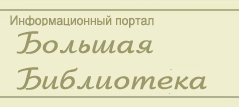Другое : The mathematical sciences
The mathematical sciences
The mathematical sciences
Rapid growth in the nature and
applications of mathematics means that the Newtonian core - calculus, analysis,
and differential equations - is now just one part of a more diverse
mathematical landscape. Yet most scientists have explored only this
original territory, because that is all that was included in their curriculum
in high school, college, and graduate school. With the exception of statistics,
an old science widely used across all disciplines that has become largely
mathematical during the 20th century, the narrow Newtonian legacy of analysis
is the principal connection between practicing scientists and broad
mathematical foundations of their disciplines.
The
dramatic changes in the mathematical sciences of the last quarter century are
largely invisible to those outside the small community of research
mathematicians. Today's mathematical sciences, like yesterday's Gaul, can be
divided into three parts of roughly comparable size: statistical science, core
mathematics, and applied mathematics. Each of these three major areas is led
(in the United States) by a few thousand active researches and receives
approximately $50 million in federal research support annually. Although the
boundaries between these parts overlap considerably, each province has an
identifiable character paradigm established by Newton: data, deduction, and
observation.
Core
mathematics investigates properties of number and space, ideas rooted in
antiquity. Its tools are abstraction and deduction; its edifices include
functions, equations, operators, and infinite-dimensional space. Within core
mathematics are found the traditional subjects of number theory, algebra,
geometry, analysis, and topology. After a half-century of explosive specialized
growth, core mathematics is experiencing a renaissance of renewed integrity
based on the unexpected but welcome discovery of deep links among its various
components.
Список литературы
Для
подготовки данной работы были использованы материалы с сайта http://www.english-easy.info
|


